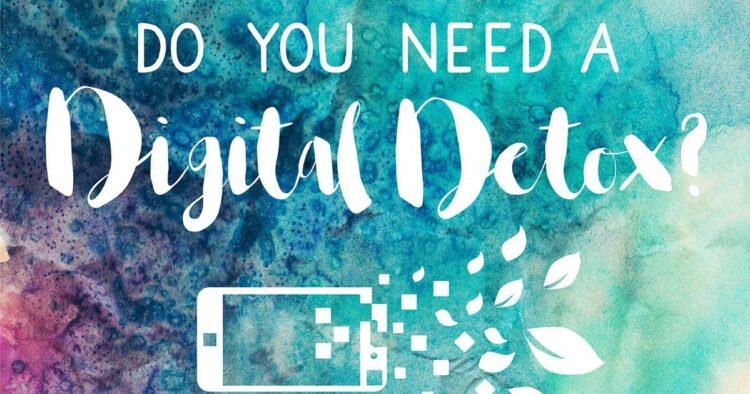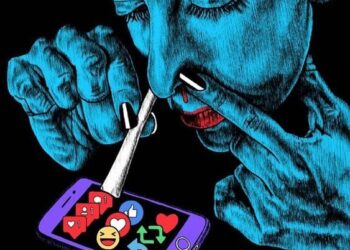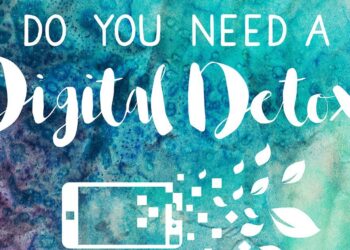In the quiet moments of your day, do you find your thumb instinctively twitching, searching for the familiar cool glass of a smartphone screen? Do you fall into bed, exhausted, only to spend another hour illuminated by the artificial glow of an endless social media feed? If this sounds familiar, you are not alone. You are living in the age of digital saturation, a time when our minds are constantly bombarded by notifications, emails, and an infinite stream of content. The promise of constant connection has, for many, morphed into a state of perpetual distraction and anxiety.
The solution is not to abandon technology altogether but to reclaim control. This is the essence of a digital detox: a conscious and deliberate period of time away from electronic devices to focus on real-life social interactions and activities. It’s a powerful reset button for your brain, your relationships, and your overall well-being. This is not about demonizing technology; it is about redefining your relationship with it, transforming it from a demanding master into a useful servant.
This comprehensive guide will walk you through the entire digital detox journey. We will explore the subtle but significant signs that you’re overdue for a break, uncover the life-changing benefits of unplugging, and provide a practical, step-by-step blueprint to help you disconnect successfully. More importantly, we will show you how to move beyond a temporary detox to cultivate a sustainable, healthy, and intentional balance with technology for the long term.
The Warning Signs: Recognizing Digital Burnout
Before you can solve a problem, you must first recognize it. Digital overload often creeps into our lives so gradually that we fail to notice its profound impact. These are the critical warning signs that your mind and body are crying out for a break.
A. Constant Digital Anxiety and FOMO: Do you feel a wave of anxiety when your phone is not in your hand? Do you compulsively check social media for fear of missing out (FOMO) on a conversation, a trend, or a news update? This low-grade, persistent anxiety is a hallmark of being too plugged in. Your nervous system is in a constant state of alert, waiting for the next ping, buzz, or notification.
B. Deteriorating Sleep Quality: The blue light emitted from our screens is a notorious enemy of sleep. It suppresses the production of melatonin, the hormone that tells your body it’s time to rest. This leads to difficulty falling asleep, restless nights, and waking up feeling groggy and unrefreshed. This cycle is often exacerbated by “revenge bedtime procrastination,” where you sacrifice sleep for the leisure time you feel you missed during the day.
C. A Shattered Attention Span: Are you finding it increasingly difficult to read a book, watch a full-length movie without checking your phone, or focus on a single task at work for an extended period? The constant context-switching demanded by our digital devices trains our brains to crave novelty and distraction, effectively shattering our ability to engage in deep, focused work.
D. Negative Social Comparison and Mood Swings: Social media platforms are highlight reels of other people’s lives. Constantly consuming these curated, often unrealistic, portrayals of success, happiness, and perfection can lead to feelings of inadequacy, envy, and even depression. If you frequently leave a social media session feeling worse about yourself than when you started, it’s a major red flag.
E. Physical Symptoms Emerge: Our bodies also bear the brunt of our digital habits. Chronic neck and shoulder pain (often called “tech neck”), persistent headaches from eye strain, and a sedentary lifestyle are all physical manifestations of excessive screen time.
The Transformative Rewards of Unplugging
Taking a break from the digital world isn’t about deprivation; it’s about restoration. The benefits extend far beyond simply feeling less stressed and can have a profound impact on every area of your life.
A. Rediscover Mental Clarity and Deep Focus: When you remove the constant chatter of the digital world, your mind has a chance to quiet down. This mental space allows for clarity of thought, improved problem-solving skills, and the return of your ability to concentrate deeply. Boredom, once a dreaded state, becomes a catalyst for creativity and new ideas.
B. Improve Your Sleep and Boost Your Energy: By eliminating screen time, especially in the hours before bed, you allow your body’s natural sleep-wake cycle to recalibrate. The result is deeper, more restorative sleep, which directly translates to higher energy levels, a more stable mood, and improved cognitive function during the day.
C. Nurture Authentic, Real-World Connections: A digital detox frees up a significant amount of time and mental energy that can be reinvested into the people who matter most. Without the distraction of a phone at the dinner table or during a conversation, you can be fully present. This fosters deeper, more meaningful connections with family and friends.
D. Spark Creativity and Reconnect with Hobbies: When you’re not passively consuming content, you create space to actively create. A digital detox is the perfect opportunity to dust off an old hobby, learn a new skill, spend time in nature, or pick up that musical instrument that’s been gathering dust in the corner.
Your Blueprint for a Successful Digital Detox
Embarking on a digital detox can feel daunting, but with a clear plan, it is not only achievable but empowering. Think of it in phases: preparation, execution, and integration.
Phase 1: Prepare for Success
A. Define Your “Why”: This is the most crucial step. What is your core motivation? Is it to be more present with your children? To finish a creative project? To improve your sleep? Write down your “why” and place it somewhere visible. It will be your anchor when you feel the urge to reconnect.
B. Choose Your Detox Style: You don’t have to go cold turkey for a month. Choose a style that fits your life and your goals. * The Weekend Reset: A complete disconnect from Friday evening to Monday morning. Ideal for a first-timer. * The Gradual Reduction: Focus on one area at a time, like deleting a specific app or implementing a “no screens after 9 PM” rule. * The Thematic Detox: A social media-only detox or a break from news and email while still allowing for essential work tools.
C. Communicate Your Intentions: Let your friends, family, and relevant colleagues know that you’ll be less digitally available for a specific period. This manages expectations and prevents you from feeling guilty or causing unnecessary worry. A simple message like, “I’m taking a digital detox this weekend to recharge, so I’ll be off my phone. Talk to you Monday!” is sufficient.
D. Set Clear and Firm Boundaries: Decide your rules in advance. What devices are off-limits? All of them? Or just smartphones? Are you allowed to check email once a day for work emergencies? Will you allow phone calls? Be specific. The clearer your rules, the easier they are to follow.
Phase 2: Execute with Purpose

E. Create Tech-Free Zones and Times: Designate physical spaces and specific times of the day where screens are strictly forbidden. The two most effective zones are the bedroom and the dinner table. This immediately improves sleep and the quality of your meals and conversations.
F. Sanitize Your Digital Environment: Before you start, make it harder to relapse. * Delete the Offending Apps: Temporarily remove the social media and game apps that consume most of your time. The simple act of having to reinstall them creates a powerful barrier. * Turn Off All Non-Essential Notifications: The red bubbles and banners are designed to hijack your attention. Go into your settings and turn off notifications for everything except calls and messages from key contacts. * Log Out of Everything: Log out of your social media and email accounts on your browser. The extra step of having to log back in can be enough to deter mindless checking.
G. Plan Fulfilling Alternative Activities: This is the secret to a successful detox. You must replace the void left by technology with engaging, real-world activities. Make a list before you start. * Read a physical book or magazine. * Go for a walk, hike, or bike ride in nature. * Cook a new recipe. * Work on a puzzle or play a board game. * Meet a friend for coffee (and leave your phones in your pockets). * Tackle a home improvement or gardening project. * Visit a museum or local attraction. * Practice mindfulness or meditation.
Beyond the Detox: Forging a New Relationship with Technology

A temporary detox is a fantastic reset, but the ultimate goal is to establish a sustainable, long-term balance. The real work begins when you slowly and intentionally reintroduce technology into your life.
A. Embrace Digital Minimalism: This philosophy involves a radical decluttering of your digital life. Question every app, every subscription, and every account. Does this tool genuinely add significant value to my life? If the answer is a hesitant “maybe,” it’s a candidate for deletion. Keep only what is essential and joy-promoting.
B. Practice Mindful Technology Use: When you do use your devices, be intentional. Instead of mindlessly scrolling, have a specific purpose. Are you looking up a recipe? Messaging a specific friend? Set out to do that one thing, and when you are done, put the device away. Resist the urge to let one task bleed into an hour of aimless browsing.
C. Turn “Always On” to “Scheduled On”: Instead of checking email and social media constantly throughout the day, designate specific, batched times to engage. For example, check your email at 9 AM, 1 PM, and 4 PM. Check social media for 15 minutes in the evening. This puts you in control of the technology, not the other way around.
D. Use Technology to Fight Technology: Leverage apps and tools designed to help you manage your screen time. Most smartphones now have built-in wellness features that allow you to track your usage, set daily time limits for specific apps, and schedule “downtime” when most apps are inaccessible.
E. Aggressively Cultivate Offline Hobbies: The more fulfilling your offline life is, the less appealing the digital world becomes. Invest your time and energy into hobbies, skills, and relationships that exist entirely in the physical world. A life rich with tangible experiences is the greatest defense against the empty allure of the infinite scroll.
The journey to digital wellness is not about achieving a perfect state of disconnection but about a continuous, conscious effort to live intentionally in an increasingly noisy world. It’s about choosing presence over distraction, creation over consumption, and authentic connection over superficial engagement. Start your digital detox today, not as an escape from your life, but as a powerful step toward reclaiming it.












